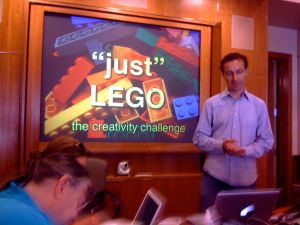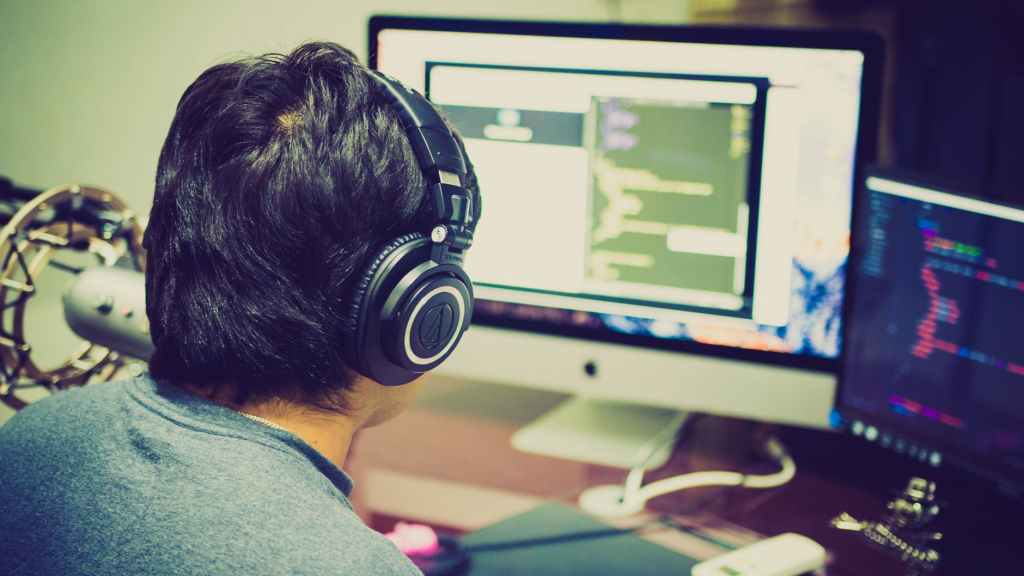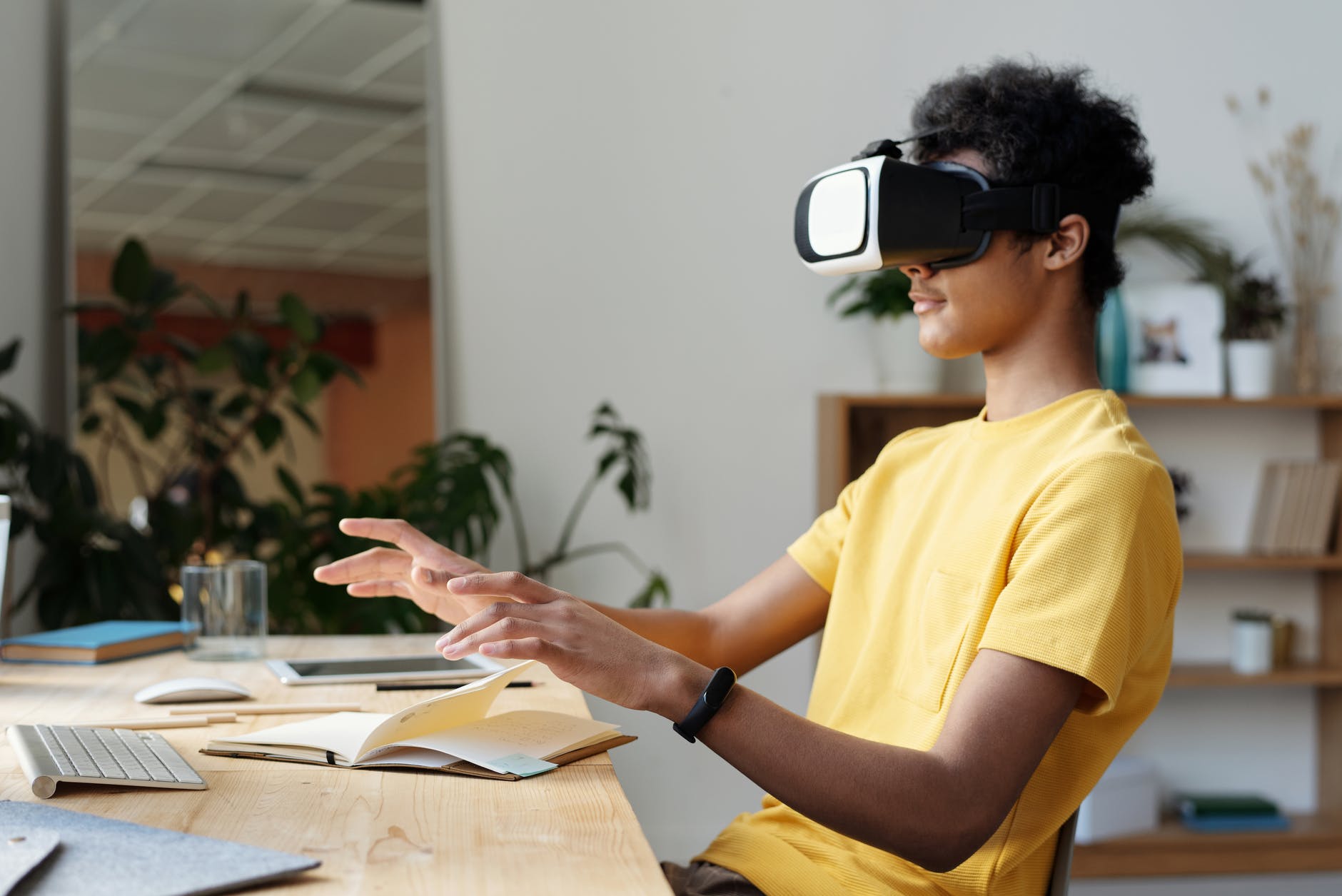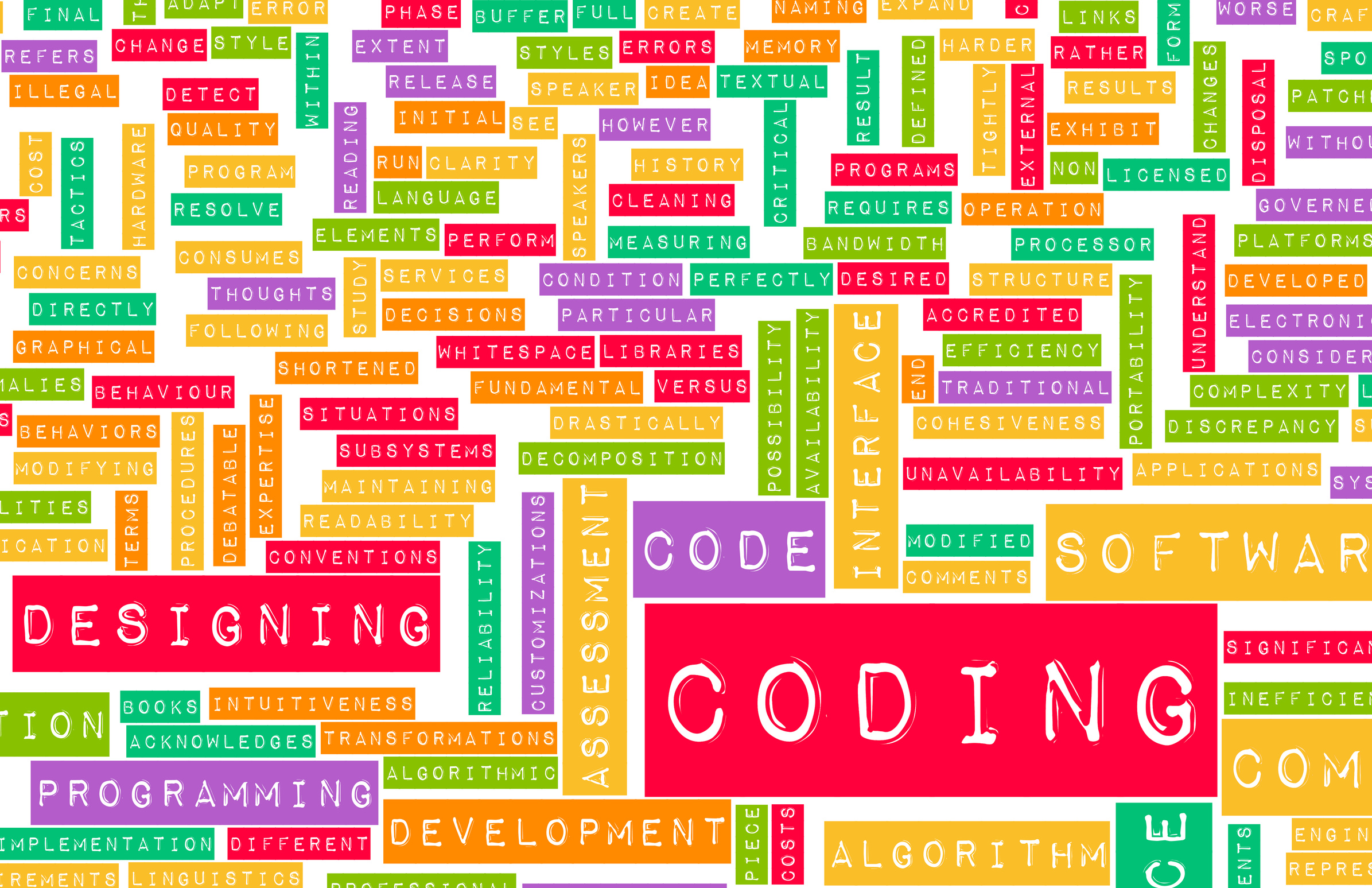
Alex Repenning
What book are you reading?.. I have three on education that are catching my attention. Some of us have been talkking about preparing for the 21st Century for about 20 years. Some of this has happened, but many people are on the digital dark road.
Time to put the Edge into Education
Revisiting Common Ground. an NIIAC Document 1995 -Why didn’t this happen?
by Bonnie Bracey Sutton
How much of this has happened? Take a look.
What are the impediments besides the lack of broadband.
I believe the lack of sufficient teacher professional development and the lack of school infrastructure are a part of the problem. Bad teachers? Who says?What about the lack of
understanding what was needed to meet the challenge of transformation?What about the slow understanding of how the world has changed with social media and the ways in which
the whole world has become internationalized? How has thinking changed about content?
Your thoughts , ideas ? What happened? Why did not a lot of this happen?
A Transformation of Learning:
Use of the NII for Education and Lifelong Learning
Bonnie Bracey <bbracey@aol.com>
Today, we have a dream for a different kind of superhighway that
can save lives, create jobs and give every American young and old,
the chance for the best education available to anyone, anywhere.
I challenge you. . .to connect all of our classrooms, all of our
libraries, and all of our hospitals and clinics by the year 2000.
Vice President Al Gore, speaking to communications industry
leaders, January 11, 1994
I am a classroom teacher. I am a member of the National Information
Infrastructure Advisory Council, appointed by the President and we are
involved in sharing our documents, which we wrote and the “Common Ground”
that links the ideas that will allow Americans to see the future, using
technology.
I want to share with you scenarios of technology at work from the Office of
Technology Assessment video, the overarching themes, or Common Ground of the
National Information Infrastructure Advisory Council
and the National Institute of Standards vision for the thinking which will
take us into technology.
Education and Lifelong Learning
Communications technology is transforming the way we live by
connecting us with information and each other. The National
Information Infrastructure (NII) promises every business,
government agency, hospital, home, library, and school in the
nation access anywhere to voice, data, full-motion video, and
multimedia applications. The impact of these capabilities on
learning — for the children, for higher education students, and
for lifelong learners — will be substantial.
The way Americans teach, learn, transmit and access information
remains largely unchanged from a century ago. We find the following
conditions in American education and training:
– The textbook remains the basic unit of instruction. Absorption of
its contents tends to be the measure of educational success.
– Teachers and instructors use “chalk and talk” to convey
information. Students are often recipients of instruction rather
than active participants in learning.
– School teachers work largely in isolation from their peers.
Teachers interact with their colleagues only for a few moments each
day. Most other professionals collaborate, exchange information and
develop new skills on a daily basis.
– Although half of the nation’s school teachers use passive video
materials for instruction, only a small fraction have access to
interactive video, computer networks, or even telephones in the
classroom.
– While computers are a frequent sight in America’s classrooms and
training sites, they are usually used simply as electronic
workbooks. Interactive, high performance uses of technology, such
as networked teams collaborating to solve real-world problems,
retrieving information from electronic libraries, and performing
scientific experiments in simulated environments, are all too
uncommon.
– “U.S. schooling is a conservative institution, which adopts new
practice and technology slowly. Highly regulated and financed from
a limited revenue base, schools serve many educational and social
purposes, subject to local consent. The use of computer technology,
with its demands on teacher professional development, physical
space, time in the instructional day, and budget … has found a
place in classroom practice and school organization slowly and
tentatively.”[note 1]
Events of the last two decades have proven that we can do better.
We have found that most American children are capable of learning
at dramatically higher levels — levels of performance we now
expect only of our best students. We have learned this from
research in cognitive science, from the educational achievements of
other countries, and from pioneering efforts in our own schools.
Moreover, after 35 years of research, we have found that technology
can be the key to higher levels of achievement.[note 2]
Similarly, in the American workplace we have found that workers can
achieve levels of productivity and quality equal to the best in the
world.[note 3] Well-educated, well-trained, motivated workers can
produce high-quality goods and services at low cost, enhance
industrial productivity and competitiveness, and sustain high
living standards. High-quality education and training payoff for
the individual whose skills are upgraded, for the company seeking
a competitive edge, and for the nation in achieving overall
productivity and competitiveness.
Our major foreign competitors place much greater emphasis on
developing and maintaining workforce skills than we do. Experienced
production workers at Japanese auto assembly plants, for example,
receive three times as much training each year as their American
counterparts. Research in our country has shown that workers who
receive formal job training are 30 percent more productive than
those who do not. Again, we have found that technology is the key
to making training accessible and affordable — especially for
small- to medium-sized firms with few resources of their own to
devote to producing and implementing the training and lifelong
learning their workers need and for workers who, on their own, are
attempting to improve their skills or transfer them to new areas of
endeavor.
Finally, in preparing students for the workplace, we have learned
that interactive, high performance technology can produce
immersive, real world instructional environments. These
environments can smooth longterm school-to-work transitions while
helping to meet the immediate objectives of both schools and
workplaces. Our efforts to develop this capability have been
fragmentary and shortlived at best.
A Vision for the Use of the NII
The NII, will be the vehicle for improving education and lifelong
learning throughout America in ways we now know are critically
important. Our nation will become a place where students of all
ages and abilities reach the highest standards of academic
achievement. Teachers, engineers, business managers, and all
knowledge workers will constantly be exposed to new methods, and
will collaborate and share ideas with one another.
Through the NII, students of all ages will use multimedia
electronic libraries and museums containing text, images, video,
music, simulations, and instructional software. The NII will give
teachers, students, workers, and instructors access to a great
variety of instructional resources and to each other. It will give
educators and managers new tools for improving the operations and
productivity of their institutions.
The NII will remove school walls as barriers to learning in several
ways. It will provide access to the world beyond the classroom. It
will also permit both teachers and students access to the tools of
learning and their peers — outside the classroom and outside the
typical nine to three school day. It will enable family members to
stay in contact with their children’s schools. The NII will permit
students, workers and instructors to converse with scientists,
scholars, and experts around the globe.
Workplaces will become lifelong learning environments, supporting
larger numbers of high skill, high wage jobs. Printed books made
the content of great instruction widely and inexpensively available
in the 18th Century. The interactive capabilities of the NII will
make both the content and interactions of great teaching
universally and inexpensively available in the 21st Century.
Education and Lifelong Learning Applications for the NII
The NII will provide the backbone for a lifelong learning society.
Education and training communities will better accommodate an
enormous diversity of learners in an equally diverse variety of
settings. In addition to schools and work places, interconnected,
high-performance applications will extend interactive learning to
community centers, libraries, and homes. Education, training, and
lifelong learning applications available from the NII may include:
– Multimedia interactive learning programs delivered to homes to
immigrant children and their parents to collaborate on learning
English as a second language.
– Troubleshooting and operating applications that access the
computer-assisted-design (CAD) databases used to design workplace
technology and to integrate the CAD data with instructional and
job-aiding capabilities to provide just-in-time training and
maintenance assistance.
– Comprehensive interconnectivity for students that allows them to
receive and complete assignments, collaborate with students in
distant locations on school projects, and interact with teachers
and outside experts to receive help, hints, and critiques.
– Simulated learning activities such as laboratory experiments and
archeological digs.
– Universal access interfaces for computers and telecommunications
devices for students, workers and others with disabilities to allow
access to the NII.
– Affordable, portable personal learning assistance that tap into
the NII from any location at any time and provide multimedia access
to any NII information resource.
– Immersive, realistic interactive simulations that allow emergency
teams made up of geographically dispersed members to practice
together on infrequently used procedures that may be urgently
needed to meet local exigencies.
The Educational Benefits of Technology
Evidence from research, schools, and workplaces around the country
tells us that communications technologies are powerful tools in
reaching the highest levels of educational performance.
– Students with disabilities, who previously had at best limited
access to most educational and reference materials, will have
fuller access and will have the ability to participate in the
learning experience with their peers.
– A 1993 survey of studies on the effectiveness of technology in
schools concluded that “courses for which computer-based networks
were used increased student-student and student-teacher
interaction, increased student-teacher interaction with
lower-performing students, and did not decrease the traditional
forms of communications used.”[note 4]
– Research on the costs of instruction delivered via distance
learning, videotape, teleconferencing, and computer software
indicates that savings are often achieved with no loss of
effectiveness. Distance learning vastly broadens the learning
environment, often providing teaching resources simply not
available heretofore. Technology-based methods have a positive
impact on learner motivation and frequently save instructional
time. Savings in training time produce benefits both by reducing
training costs and by shortening the time required to become and
remain productive in the workplace.
– A review of computer-based instruction used in military training
found that students reach similar levels of achievement in 30% less
time than they need using more standard approaches to
training.[note 5]
– A Congressionally mandated review covering 47 comparisons of
multimedia instruction with more conventional approaches to
instruction found time savings of 30%, improved achievement, cost
savings of 30-40%, and a direct, positive link between amount of
interactivity provided and instructional effectiveness.[note 6]
– A comparison of peer tutoring, adult tutoring, reducing class
size, increasing the length of the school day, and computer-based
instruction found computer-based instruction to be the least
expensive instructional approach for raising mathematics scores by
a given amount.[note 7]
– A landmark study of the use of technology for persons with
disabilities found that “almost three-quarters of school-age
children were able to remain in a classroom, and 45 percent were
able to reduce school-related services.”[note 8]
Of course, these benefits depend upon several contextual factors,
including the instructional methods used, the quality of the
applications, the availability of professional development for
educators, accessibility of instructional materials, the presence
of school technology support staff, and family involvement.[note 9]
We must learn through experience how best to ensure that the
benefits we intend to obtain from NII-based applications become
routinely realized in practice.
Telecommunications networks provide a range of resources to
students and educators that were never before available or
affordable. Students and workers can now gain access to mentoring,
advice, and assistance from scientists, engineers, researchers,
business leaders, technicians, and local experts around the globe
through the Internet, using a level of access and connectivity that
was previously unimaginable. High school students in West
Virginia, for example, can now study Russian via satellite and
telephone with a teacher hundreds of miles away. Few West Virginia
school districts could afford to offer such a course any other way.
Less well understood are changes in the types of learning that
occur with the use of certain technologies. Current evidence
suggests that some technology applications are more effective than
traditional instructional methods in building complex problem
solving capabilities for synthesizing information and in improving
writing quality. The effects are achieved in part by permitting
alternate methods of “reaching” and motivating learners.
The Administration’s National Information Infrastructure initiative
can trigger a transformation of education, training, and lifelong
learning by making new tools available to educators, instructors,
students, and workers and help them reach dramatically higher
levels of performance and productivity. The impact of this
transformation in teaching and learning is in-estimable, but
clearly enormous. Knowledge drives today’s global marketplace. The
NII will permit us to take learning beyond the limitations of
traditional school buildings. It will take our educators and
learners to worldwide resources. Learning will be our way of life.
PART II: Where Are We Now?
Today, compelling teaching and learning applications are the
exception, not the rule. Several federal agencies provide services
that meet specific, focused needs, while hundreds of state and
local networks and private service providers have begun to address
the technology needs of education. Current uses, while expanding
rapidly, reach only a small number of technologically-literate
school communities.
Current application of NII capabilities to work place training is
more extensive and technologically advanced than educational
applications, yet it lags well behind what is needed and available.
The story of workplace training seems to be a case of the haves
receiving more and the have-nots remaining neglected. Small firms,
those with 100 employees or less, provide about 35 percent of total
U.S. employment, but they lack the expertise to provide in-house
training, the resources to pay for outside training, and sufficient
numbers of people who need training at any one time to justify
focused training efforts. Larger firms are more likely to provide
training than smaller ones, but the training they provide is mostly
limited to college-educated technicians and managers. The lower the
level of skills possessed, the less likely the worker is to receive
training from any source. Transportable, quality controlled
training and lifelong learning could be made readily and
inexpensively accessible using the NII and will have a major impact
on improving worker skills and workplace productivity.
While much remains to be done, the opportunities offered by the NII
put many of the needed capabilities within reach of schools, homes,
and the workplace.
Current Uses of Telecommunications for Education
The existing telecommunications infrastructure is composed of
telephone, broadcast, cable, and electronic networks. It is used
for education, training, and lifelong learning in five basic ways:
1) instructing with video; 2) gathering information from remote
libraries and databases; 3) communicating using two-way
asynchronous capabilities such as e-mail and information bulletin
boards; 4) distance learning; and 5) electronic transfer of
instructional software and simulations.
– Instructional video. Seventy-five percent of America’s schools
have cable television, and half of its teachers use video material
in their courses.[note 10] The Stars Schools program is reaching
200,000 students in 48 states with advanced placement courses in
mathematics, science, and foreign language instruction using fiber
optics, computers, and satellites.[note 11] Cassette videotapes
for instruction are widely used in schools and work places, and the
development of these videotapes for both education and training has
become a vigorous industry.
– Information collection. This activity includes location and
retrieval of documents such as lesson plans and research reports,
but it also includes newer data sources such as CAD databases for
workplace technologies and equipment, and multimedia information
retrieval from digital libraries that can be accessed by students,
workers, or people in homes, libraries, and museums. Over 60,000
electronic bulletin boards are used by more than 12 million
Americans every day.[note 12] The annual rate of Gopher traffic on
the Internet, which directly represents an effort to use NII
facilities to gather information, is growing at an annual rate of
approximately 1000%[note 13] The Department of Education has a
Gopher server which points to or contains educational research
information, such as the AskERIC service and information from
sources such as CNN, Academy One, and the Educational Testing
Service. NASA Spacelink makes lesson plans on space flight and
related science topics available on the Internet.
– Two-way communication. This includes communication via electronic
mail and conferencing among teachers, students, workers, mentors,
technicians, and subject matter experts of every sort.
Approximately one-quarter of the teachers in Texas regularly sign
on to the Texas Education Network, or TENET, to share information,
exchange mail, and find resources. A professor at Virginia
Polytechnic Institute and State University teaches a writing course
entirely online. Students swap writing projects and discuss their
assignments online. In the workplace, electronic mail is used by
more than 12 million workers, increasing to over 27 million workers
by 1995. Just less than a sixth of U.S. homes now have at least one
computer connected to a modem, and this percentage is growing
rapidly. As of July, 1993, there were four Internet hosts for
every 1000 people in the United States. There are now 60 countries
on the Internet. About 137 countries can now be reached by
electronic mail.[note 15]
– Distance learning. Hundreds of thousands of students in schools,
community colleges, and universities now take courses via one-and
two-way video and two-way audio communication. In South Carolina,
high school students across the state study with a teacher of
Russia based in Columbia through South Carolina Educational
Television. Boise State University offers a masters degree program
conducted entirely over networked computers to students all over
the country. The Department of Defense is investing well over $1
billion in the development and implementation of networked
distributed interactive simulation. This technology, which allows
dispersed learners to engage in collaborative problem solving
activities in real time, is now ready for transfer to schools and
workplaces outside of the defense sector.
– Transfer of instructional software and simulations. Instructional
programs, simulations, materials, and databases can all be accessed
over the NII and delivered to schools, homes, libraries, and
workplaces wherever and whenever it is desirable to do so.
Currently, there are massive exchanges of software, databases, and
files using the Internet, but relatively little of this activity
occurs in the service of education, training, and lifelong
learning.
Nonetheless, compelling applications that will become indispensable
to teachers, students, and workers are not yet available. All the
capabilities of computer-based instruction and multimedia
instruction can be distributed using NII facilities to schools,
workplaces, homes, libraries, museums, community centers, store
fronts — wherever and whenever people wish to learn. Yet the
infrastructure and applications to support this level of
accessibility for education, training, and lifelong learning uses
have yet to be developed. Until compelling applications are
available, educations will not realize the potential of the NII.
Efforts to Build the NII for Education and Lifelong Learning: Roles
of the Private, Nonprofit, and Public Sectors
Successful implementation of the NII to serve the nation’s
education and lifelong learning needs will require significant
contributions by the private sector, state and local governments,
Reference
D. Lewis and E. McCracken, Common Ground: Fundamental Principles for the
National Information Infrastructure, NIIAC,
March 1995.(gopher@ntiaunix1.ntia.doc.gov)
A new book by Milton Chen of the George Lucas Educational Foundation, picks up the discussion.
Where are we now?
Since information is no longer bounded by time and space, and I know you are all savvy digerati who get all your information from the Internet, you can listen to the live stream or archive at this link, where you’ll also see info on how to call in or send an email during the show:
http://www.kqed.org/radio/programs/forum/
For more info about the book and a short video of me introducing it on edutopia.org:
http://www.edutopia.org/educationnation
Now that we’re into a new school year, it’s time to put “the edge into education”!
















